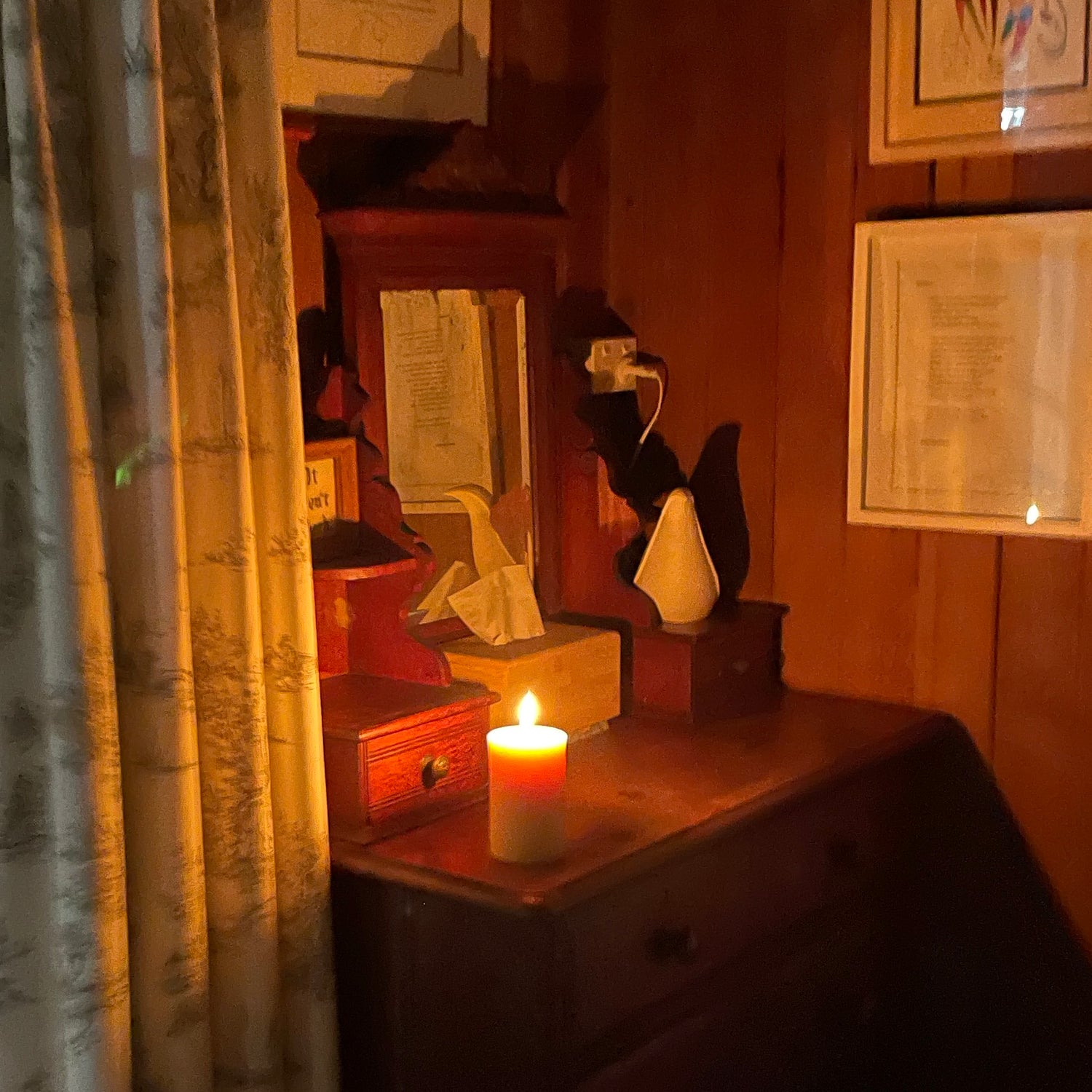THE IMPORTANCE OF CANDLES DURING TIMES OF GRIEF AND LOSS
For anyone who has known the burn of grief and loss, the pain that grips you by the short and curlies, threatens to break you, where imagined futures fall away, and you loose control over something you thought was fixed and stable, demanding that you come face to face with your own mortality - it’s a lot. This is when rituals, well-worn habits and acts of personal ceremony, showing the depth of our love, come to the fore, the best ways to help - and not a moment too soon.
Grief is one of those times when the simple act of candle lighting to create a soft glow can ground and connect you to both yourself and those you have lost. The symbolism of a burning candle is strong. And used in various cultures. It demands serenity and Selah - a Hebrew word that asks us to pause, be still, and contemplate. It’s known as a space between words, thoughts, and prayers. Lighting a candle during this time can create space to find a semblance of ground and order in an otherwise out-of-control time and become a constant companion during emotional turbulence. An important role in times of mourning.
What does research tell us about grief rituals?
Research shows that grief is often lower and less persistent for people who perform personal grief rituals in these difficult times. Since its invention over 3000 BC, the humble candle has evolved into a powerful symbol that provides light in in times of darkness. In bereavement, candles often function to inspire reflection and tribute. They feature prominently in vigils. People light candles on the graves and shrines of their loved ones and often spontaneously place candles in front of houses of recently deceased public figures or commemorate deaths caused by natural disasters or acts of terror. The National Holocaust Museum has a whole candle room for remembrance.
In response to the impersonal and protocolised management of the deceased in hospitals (i.e., closed curtains and cold stop signs), the Mayo Hospital Intensive Care Unit (ICU) has even trialled candles, albeit illustrated candles on the door of a dying patient's room and the nurses' stations opposite or near the room of the dying or deceased patient. The illustrations are considered a neutral, non-denominational way of identifying those rooms with patients transitioning to comfort care or who have recently died. They encourage staff to move more into silence and consider their words and actions as they carry out their care. The illustrations remain in place until the family members have said their last goodbyes and departed. The hospital staff of the study have remarked on the gesture's simple yet powerful symbolism of the candle, a candlelight vigil, helping in the grieving process, positively impacting, reducing the negative energy, of the death experience and honouring end-of-life care.
Honouring those in grief today with candles
In a time when we still so quickly come to feel embarrassed by our sorrow, asked to get over things and quickly, ‘get through it’, ‘move on’ and ‘don’t do your grieving here’, rituals in grief offer us a reminder of what we deeply care about. They take a strong role, demand, that we pause and consider our lives and what’s important. For these reasons, let's give a thought to people living and breathing with grief, pain and sorrow at this time. To honour the reality that when grief turns up on our front door steps, suitcase in hand, it often says, 'Here I am, I intend to stay for a while'. Contrary to our long-held assumptions, there are no rules to grief, no stages, and no tasks to do except those we set ourselves. Grief lasts as long as it lasts, and everyone will grieve differently. With this in mind, let's also light a candle for those living through grief and pain of loss today - that they can live unapologetically from our hearts, allow all their emotions to move in ways they need them to, and for as long as they are there. We can't take away anyone else's pain, but we can certainly sit with one another for as long as is needed. A practice of lighting candles for as long as it takes to calm the mind is important, releasing the feelings of grief, and to honor of the deceased. It is a healing process.
In the spirit of reclaiming ritual in grief and loss, the poem by Paul Alexander has particular potency:
“Light A Candle”
And I will light a candle for you
To shatter all the darkness and bless the times we knew
Like a beacon in the night
The flame will burn bright and guide us on our way
Oh, today I light a candle for you
The seasons come and go, and I’m weary from the change
I keep moving on; you know it's not the same
And when I’m walking all alone
Do you hear me call your name?
Do you hear me sing the songs we used to sing?
You filled my life with wonder, touched me with surprise
Always saw that something special deep within your eyes
And through the good times and the bad
We carried on with pride
I hold on to the love and life we knew.
Which candle to help grief is a personal choice but powerful way to help. Take time looking at all the options we have here. Some friends that use candles for memorials and other religious practices, use our Happy lights as they burn all day when needed. Larger pillar candles are also popular as a memorial candle, and our 4 hour tea lights are perfect when you wish to burn the whole candle in one sitting. These may also help as funeral service, or memorial service, as a symbol of light.
A candle is also a thoughtful sympathy gift for a grieving person. Some ideas for gifts are here. A sympathy candle wonderful source of comfort. We don't offer a white candle all the time as we only have 100% beeswax which varies in colour, BUT if this is important for a special event,please email Peter as we sometimes have a little natural white beeswax .


